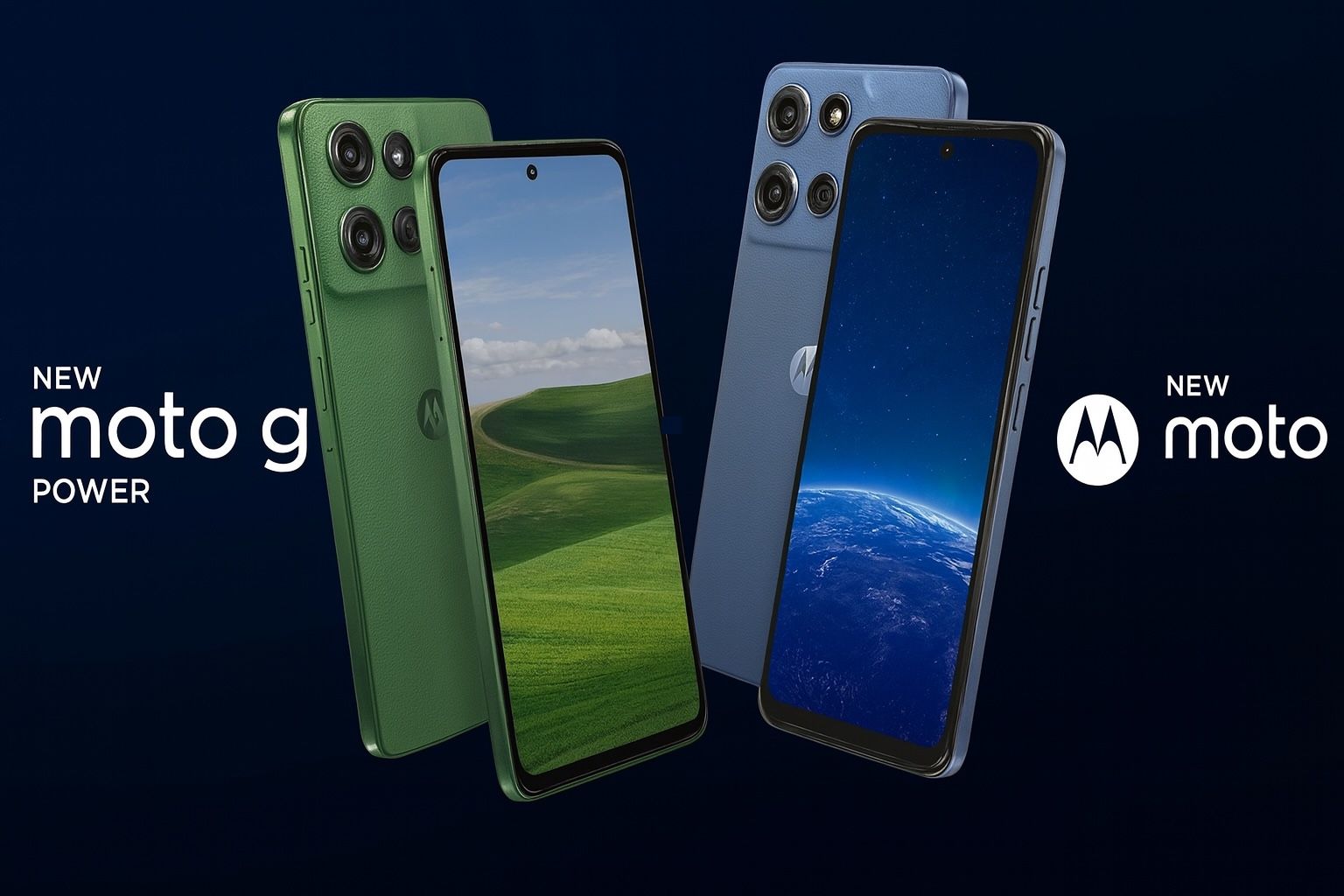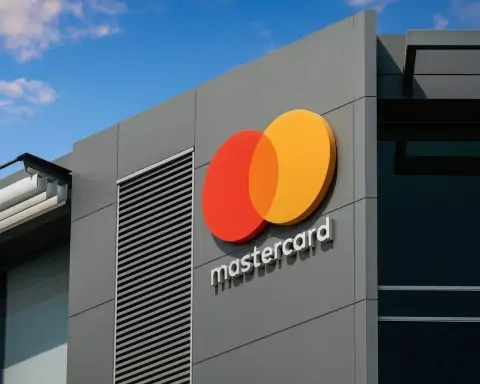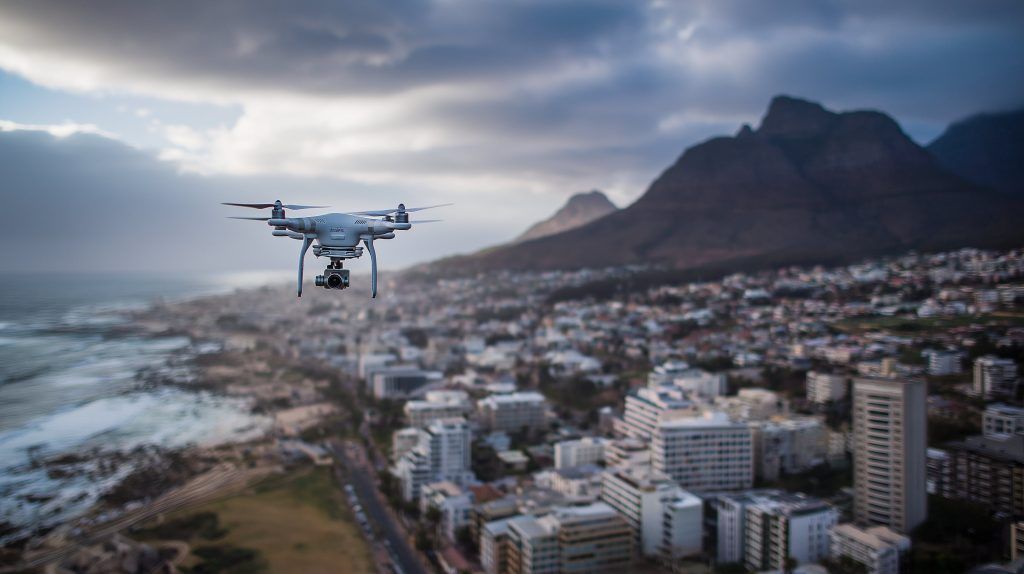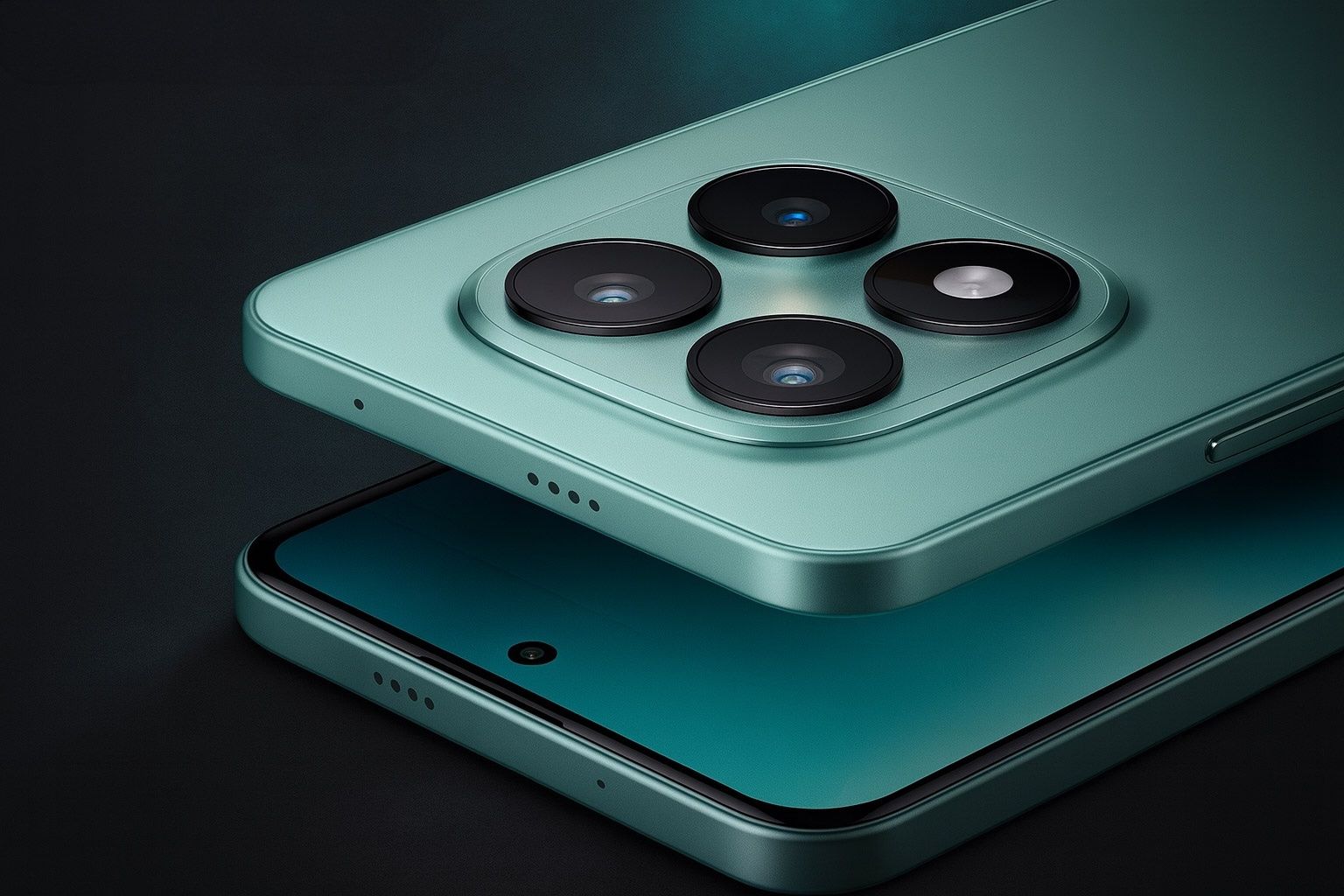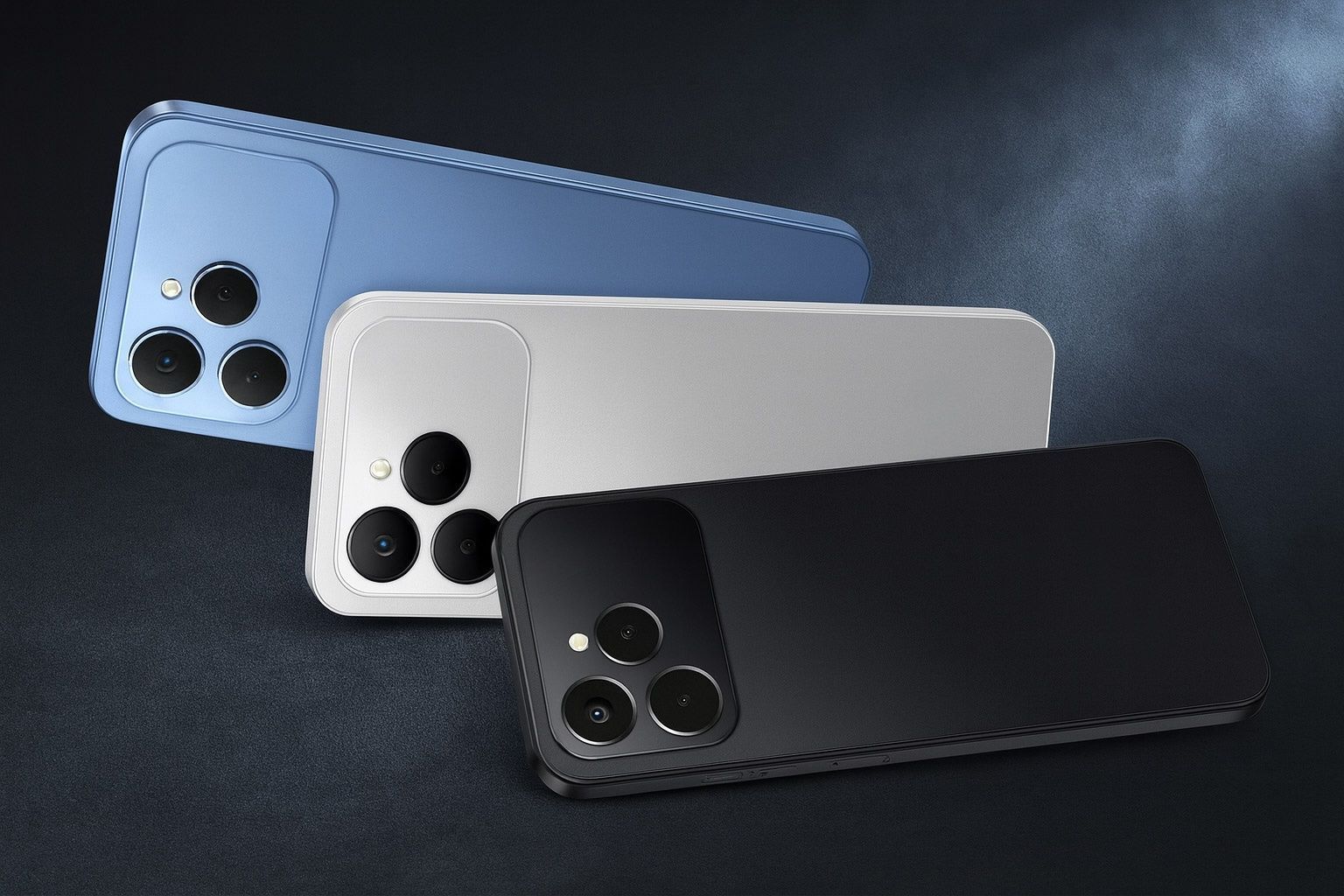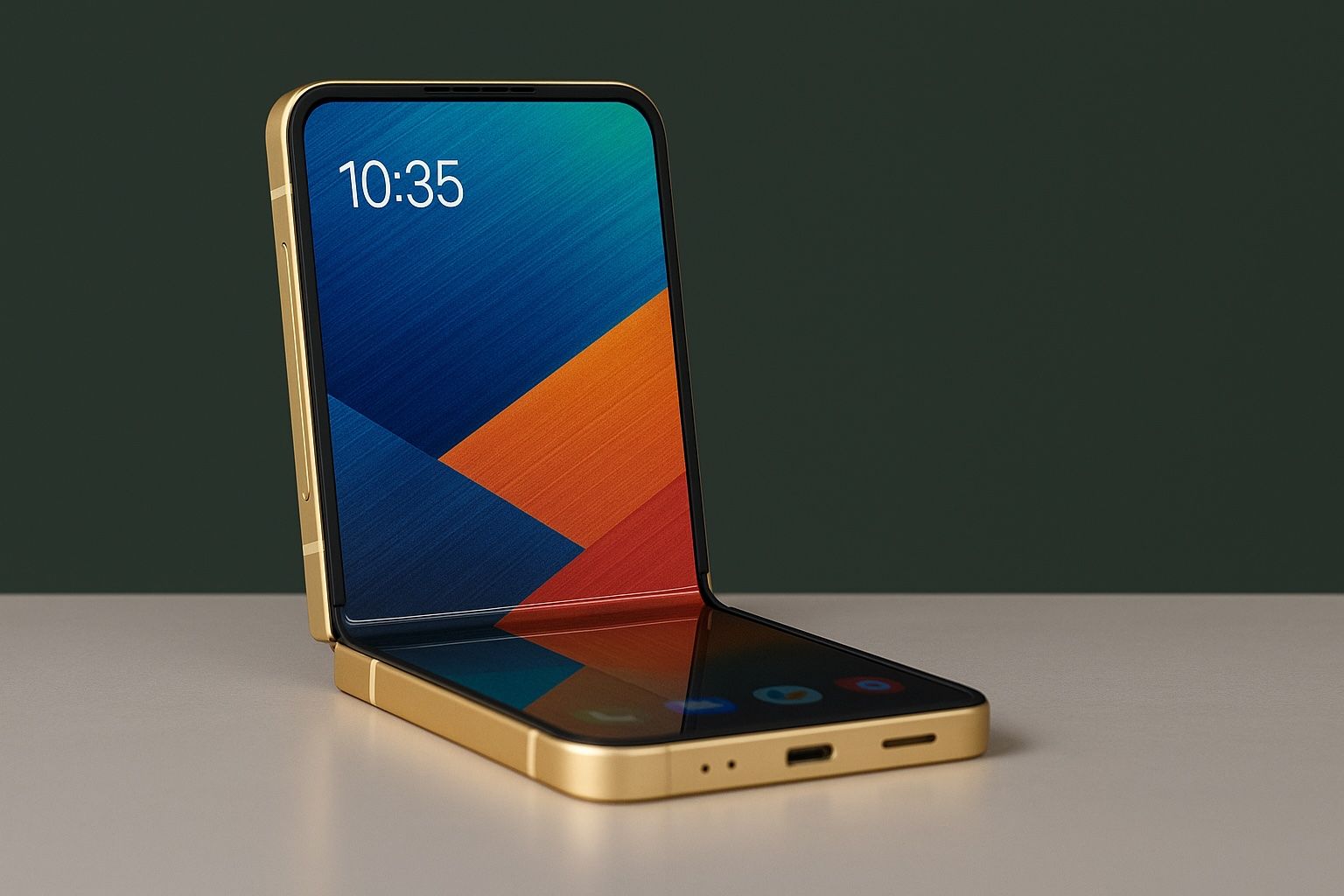- Moto G Power (2025) features a 6.8-inch Full HD+ LCD with 120Hz, IP68/IP69K water resistance, MIL-STD-810H durability, a 208g body, a 3.5mm jack, and Dolby Atmos stereo speakers.
- Nokia G400 5G has a 6.6-inch 120Hz IPS LCD at 2408×1080, Gorilla Glass 3, an aluminum frame, about 198g, a 3.5mm jack, microSD expansion, and includes the charger in the box but carries no official IP rating.
- Infinix Zero Ultra sports a 6.8-inch 3D curved AMOLED Full HD+ display with 120Hz, around 1000 nits brightness, a dual-cell 4500 mAh battery with 180W Thunder Charge, weighs 213g, and omits a 3.5mm jack while including an in-display fingerprint sensor and X-axis vibration motor.
- Moto G Power (2025) runs on a MediaTek Dimensity 6300, with 8GB RAM and 128GB storage, expandable via microSD up to 1TB, up to 24GB effective RAM with RAM Boost, and ships with Android 15.
- Nokia G400 5G is powered by Snapdragon 480+ 5G, with 4GB RAM and 64GB storage, originally launched with Android 12 and no official OS upgrade guarantee.
- Infinix Zero Ultra uses Dimensity 920, with 8GB RAM and 256GB storage, no microSD support, runs Android 12 with XOS 12, and can record 4K video.
- Moto G Power (2025) rear cameras include a 50MP main with OIS and an 8MP ultrawide, while a 16MP front camera handles selfies; video capture goes up to 1080p.
- Nokia G400 5G camera setup includes a 48MP main (f/1.8, PDAF), a 5MP ultrawide, a 2MP depth/macro, plus a 16MP front camera and 1080p60 video.
- Infinix Zero Ultra camera system features a 200MP main with OIS, a 13MP ultrawide, a 2MP depth sensor, and a 32MP front camera with 4K HDR video.
- Pricing highlights show the Moto G Power (2025) launched at $299.99 but is often discounted to around $200; the Nokia G400 5G started under $300 (typically $239–$269) and can drop below $200 on sale; the Infinix Zero Ultra launched around $520 globally (about ₹29,999 in India).
When it comes to affordable smartphones, Motorola, Nokia, and Infinix have each staked a claim with feature-packed devices. In this report, we compare Motorola’s Moto G Power (2025), Nokia G400 5G, and Infinix Zero Ultra, diving into their full technical specifications, prices, expert opinions, latest news, and what’s next. Whether you’re a casual user or a tech enthusiast on a budget, read on to see how these phones stack up.
Full Technical Specifications Comparison
Display & Design
Moto G Power (2025): Boasts a 6.8-inch Full HD+ LCD display (2388×1080) with a smooth 120Hz refresh rate. While the panel is sharp and sizeable, it’s still LCD – something reviewers note feels dated in 2025, as many rivals have moved to OLED screens. The Moto G Power’s design stands out with a vegan leather back and solid heft (208g). Impressively, it comes with IP68/IP69 water and dust resistance and even MIL-STD-810H certification for drops and extreme conditions [1]. This means it’s one tough phone – Motorola practically borders on rugged phone territory here, despite the sleek look. And yes, it still has a 3.5mm headphone jack for wired audio, plus stereo speakers with Dolby Atmos support for an extra entertainment punch.
Nokia G400 5G: Features a 6.6-inch IPS LCD display (2408×1080) with a 120Hz refresh rate. This screen earned praise for being sharp, colorful, and smooth – quite impressive at the G400’s low price. It’s protected by Corning Gorilla Glass 3, though one reviewer lamented that their unit’s screen shattered on a drop, hinting you’ll still want a case. Design-wise, the G400 is fairly minimalist (“bland and dreary” in gray, as WIRED put it). Its frame is aluminum and it weighs about 198g. There’s no official IP rating on the G400, so it’s less rugged than the Moto. However, Nokia retained practical features like the 3.5mm headphone jack and microSD slot, which are appreciated on a budget device. It even includes a charger in the box, a nice perk as some brands remove them nowadays.
Infinix Zero Ultra: Sports a 6.8-inch 3D curved AMOLED display with Full HD+ resolution and 120Hz refresh rate. This “waterfall” curved screen gives the Zero Ultra a premium look and feel, almost like a flagship. It’s very bright (up to ~1000 nits peak) and crisp, making content consumption a pleasure. The fingerprint scanner is integrated under the display for a modern touch. The build is flashy: Infinix used an “innovative textured glass and star trail” design on the back, offered in Cosmic Silver or Black. While it looks high-end, there’s no stated IP water resistance, so handle with care. Notably, the Zero Ultra omits a 3.5mm jack – a USB-C adapter is needed for wired audio (a common trade-off in phones chasing a sleek profile). It does have stereo speakers and a dedicated X-axis vibration motor for haptics, further upping the premium feel. At 213g, it’s the heaviest of the trio, likely due to that glass build and dual-cell battery design.
Processor, RAM & Storage
Moto G Power (2025): Runs on the new MediaTek Dimensity 6300 chipset (6nm octa-core up to 2.4GHz). This is a mid-range processor; early reviews note it’s “not much faster than before” (comparing to the 2024 model). In practical terms, it handles everyday tasks fine, but don’t expect a performance powerhouse – it’s optimized more for power efficiency. Paired with 8GB RAM and 128GB internal storage in its single variant, the Moto G Power can also use up to 16GB of that storage as virtual RAM (“RAM Boost”) to total 24GB in theory. It supports microSD expansion (up to 1TB) without giving up dual-SIM capability, thanks to a combo of nano-SIM + eSIM. Android 15 comes pre-installed – a rarity in current phones – meaning it’s running the latest software out of the box. Motorola’s MyUX interface is close to stock Android, with some useful gestures and security features (ThinkShield, Moto Secure) layered on. Overall, the Moto’s performance is solid for daily use and its software is up-to-date, but heavy 3D gaming or future-proofing might be limited by that mid-tier chipset.
Nokia G400 5G: Powered by Qualcomm’s Snapdragon 480+ 5G chip (8nm). This was a budget 5G chipset even at launch (2022), roughly equivalent to entry-level performance. It’s octa-core (2×2.2GHz Kryo 460 + 6×1.8GHz), with an Adreno 619 GPU. In use, it’s “decent” for everyday apps – browsing, social media, casual games – but 4GB of RAM means it can feel sluggish if you juggle many apps at once. The G400 originally shipped with Android 12 and a very clean, stock-like interface. Unfortunately, software updates are a weak point: HMD Global (Nokia’s manufacturer) provided no official OS upgrade guarantee. As of mid-2025, the G400 remains on Android 12 (Android 13 was “expected” but still hasn’t arrived). Only two years of security updates were promised, meaning support is ending about now. For storage, it has 64GB internal – modest, but the microSD slot helps alleviate that for media hoarders. In some markets a 6GB/128GB variant was mentioned, but the common model sold in the US is 4GB/64GB. Bottom line: the Nokia’s hardware was a great deal at under $250, but its long-term software support is lackluster.
Infinix Zero Ultra: Packs a MediaTek Dimensity 920 chipset (6nm, octa-core up to 2.5GHz). This chip is firmly mid-range – capable and efficient, but not on par with true flagships. In fact, reviewers noted it feels underpowered for a device that otherwise screams “ultra” in specs. Day-to-day performance is smooth enough (especially with Infinix’s optimizations for gaming and network stability), but you might see occasional stutters under heavy loads or multitasking. The phone has 8GB RAM plus an option to use 5GB of storage as virtual RAM (for 13GB effective). Storage is generous at 256GB onboard, though notably this phone doesn’t appear to support microSD expansion (256GB should suffice for most users). The Zero Ultra launched on Android 12 (XOS 12 skin). XOS is a heavily customized UI with lots of added apps and features – some find it busy or bloaty. Infinix isn’t well-known for fast Android updates; as of early 2023 there was no Android 13 yet for this model. On the bright side, XOS 12 has useful tricks (like a voice assistant that works offline and a feature-rich camera app). Overall, the Zero Ultra’s processing package delivers a “good enough” experience for most tasks and even gaming, but it doesn’t quite match the phone’s ultra-high-end camera and charging hardware in horsepower.
Cameras
Moto G Power (2025): Equipped with a dual rear camera setup: a 50MP main camera (f/1.9 aperture) with optical image stabilization (OIS), and an 8MP ultra-wide camera (f/2.2) that doubles for macro shots. Motorola trimmed down from the gimmicky triple cameras of past budget models and focused on the essentials here. The main sensor can combine pixels for better low-light shots (Quad Pixel tech resulting in 12.5MP images). In practice, this camera is serviceable: it can capture sharp daylight shots, and OIS helps in low light, but it’s not class-leading. Reviewers found image quality average – fine for social media, but colors and dynamic range don’t wow. The ultra-wide is a handy addition for group shots or wide scenery, though at 8MP it’s just okay in clarity. On the front, a 16MP selfie camera (f/2.4) handles video calls and selfies decently. The Moto G Power can record up to 1080p video (no 4K here) on both front and rear. Camera software includes night mode, portrait, and a new “Auto Night Vision” feature to automatically brighten dark scenes. It’s a capable camera setup for the price, but as PhoneArena’s review notes, competitors in this class now offer higher-resolution or more versatile cameras that put the G Power slightly behind.
Nokia G400 5G: Comes with a triple rear camera system: a 48MP main camera (f/1.8, PDAF), a 5MP ultra-wide, and a 2MP depth/macro sensor. In good light, the 48MP sensor (binned to 12MP output) can take surprisingly good shots for a budget phone – details and colors are respectable. However, it struggles with moving subjects and low light; without OIS or advanced processing, you’ll see some blur or noise in tougher conditions. The 5MP ultra-wide is a nice bonus for wide-angle snaps, but its quality is a noticeable step down from the main camera. The 2MP third lens is more or less filler – used for depth info or very basic close-ups. For video, the G400 can do 1080p at 60fps on the rear, which is not bad at this price. The 16MP front camera handles selfies adequately. Notably, reviewers and users commented that the camera is “respectable for the price” but nothing extraordinary. It’s perfectly fine for everyday snapshots. One highlight: the G400’s camera app benefits from Nokia’s AI image processing and features like night mode and portrait mode, which can produce decent results if you manage expectations.
Infinix Zero Ultra: A headline feature on this phone is its 200MP main camera with OIS. This ultra-high-resolution sensor (using pixel binning to produce 12.5MP images by default) aims to rival the cameras of true flagship phones. Indeed, in daylight the Zero Ultra can capture extremely detailed photos; the large sensor combined with OIS means it can perform fairly well at night too. However, as some reviews pointed out, software optimization wasn’t fully on point – a 200MP camera “could use better optimisation” to truly shine. Supporting the main shooter is a 13MP ultra-wide camera and a 2MP tertiary lens (likely for depth). The ultra-wide is useful and produces decent images, albeit not nearly as detailed as the main lens. The 2MP is mostly there to pad the spec sheet. On the front, Infinix gives a high-res 32MP selfie camera in a tiny punch-hole cutout. Selfies come out sharp and “Insta-ready,” as one review put it, and you can even shoot dual-view video (using front and back cameras simultaneously). Video recording on the Zero Ultra reaches 4K resolution, and with HDR support the footage looks good, though the mid-range chip means stabilization isn’t as advanced as pricier phones. Overall, the Zero Ultra’s camera setup is ambitious: it “comes with camera specs rivalling the very best, at a very affordable price”. Just note that the raw hardware is tempered by only average processing – it’s great for bragging rights and can take excellent shots, but inconsistent in challenging conditions.
Battery & Charging
Moto G Power (2025): Lives up to the “Power” name with a 5,000 mAh battery capacity. This phone is built for longevity – casual users can easily get two days on a charge, and even heavy users will typically make it through a full day thanks to the efficient chipset and near-stock software. What’s new for this generation is faster and more versatile charging: the Moto G Power supports 30W wired fast charging (Motorola TurboPower) and even 15W wireless charging. Wireless charging in particular is a rare luxury in the budget segment – a welcome addition for convenience. While 30W isn’t the fastest around, it’s a step up from the 10-20W speeds of older models; you can expect roughly 50% charge in around 30 minutes. Keep in mind Motorola no longer includes a charger in the box, so you’ll need your own 30W USB-C charger to take advantage of the top speed. With 800+ charge cycles rated for the battery, the G Power is also built to last in terms of battery health. All told, this phone offers excellent battery endurance and decent charging flexibility for its class.
Nokia G400 5G: Also comes with a 5,000 mAh battery inside. Battery life is one of this phone’s highlights: multiple reviewers noted getting a day and a half of use per charge easily. The power-sipping Snapdragon 480+ and the 60Hz/120Hz adaptive LCD help stretch the endurance for routine tasks. Charging, however, is just average. The G400 supports up to 20W wired charging (USB Power Delivery). In practice, that means roughly an hour and a half for a full refill. It’s not blazing fast, but at least Nokia included the 20W charger in the box so you’re ready to go. There’s no wireless charging on the G400 – at this price that’s expected. Overall, battery longevity is great on the G400, aligning with Nokia’s reputation for all-day phones, but the charging speed is merely okay. It’s the kind of phone you’ll want to plug in overnight, whereas the Moto and Infinix can juice up much quicker when needed.
Infinix Zero Ultra: Here’s where Infinix absolutely flexes its tech – the Zero Ultra features a 4,500 mAh battery split into two 2250 mAh cells, enabling its show-stopping 180W “Thunder Charge” technology. This is among the fastest charging in the world: Infinix claims 0 to 100% in just 12 minutes . In real-world terms, you can watch the battery percentage climb almost absurdly fast – a quick coffee break can nearly refill your phone. This ultra-fast charging is safely managed by a dual-cell design and requires the special 180W GaN charger (which Infinix provides in-box) and “Furious Mode” enabled. The trade-off: actual battery life is decent but not stellar. The 4,500 mAh capacity is a bit lower than the others here, and the power-hungry features (curved AMOLED at 120Hz, beefy camera) mean heavy users might need an evening top-up. Gadgets360 noted the Zero Ultra’s battery life doesn’t impress much – you get a day of use, but not more. Thankfully, that quick charger makes partial top-ups painless. There’s no wireless charging on the Zero Ultra, but with wired speeds this high, few will miss it. In summary, Infinix prioritizes speed: if you want a phone that can literally fill up in the time it takes to watch a short YouTube video, the Zero Ultra delivers. Just keep a charger nearby if you’re a power user, since its endurance is more average.
Software and Updates
Moto G Power (2025): Runs Android 15 out of the box, which is as bleeding-edge as it gets in early 2025. Motorola’s software experience is close to stock Android – clean UI, with a few value-adds like Moto gestures (chop for flashlight, quick capture camera twist, etc.) and the MyUX customization options. Motorola also includes its ThinkShield security suite and the new Moto Secure app for enhanced privacy (secure folder, network protection, etc.). That’s a plus for users concerned about safety. In terms of updates, Motorola has historically been hit-and-miss in the budget segment. However, with Android 15 already on board and at least one OS update and 3 years of security patches promised for the previous generation, we can expect the G Power 2025 to get at least Android 16 and a few years of patches – not great, but not worst-in-class either. One downside noted by reviewers was that Motorola still only guarantees a limited update window, which could be shorter than what Samsung or Google offer on budget models. On the whole, the Moto offers a fresh, bloat-free software experience right now, but longevity may not match some competitors’ promises.
Nokia G400 5G: Came with Android 12 (stock interface) and was part of HMD Global’s budget lineup in 2022. Initially, Nokia had a reputation for timely updates, but the G400 unfortunately did not receive strong support. WIRED criticized the “lackluster software updates,” noting the G400 had no confirmed OS upgrades and only two years of security updates. Indeed, as of this writing, the G400 is still on Android 12 – it “never got anything above” that, according to user reports. HMD has likely issued security patches through 2024, but the device is now at the end of its promised support period. This is a letdown, especially when similarly priced phones from Samsung offer longer update roadmaps. On a positive note, the software it does have is a clean Android experience with very little bloatware. Many users appreciate Nokia’s simple UI and the fact that (unlike Motorola) Nokia still included the charger and even earphones in some markets. In summary, the G400’s software works well out of the box – smooth, uncluttered, with features like NFC and even FM radio – but future updates are uncertain, making its software feel stuck in 2022.
Infinix Zero Ultra: Runs Infinix’s custom XOS 12 skin on top of Android 12. XOS is all about added features: from special voice assistants to personalized themes, it’s a more is more approach. There are some nifty inclusions like the Folax offline voice assistant and a feature-rich camera app (with Sky Remap, dual-view video, etc.). However, critics often point out that XOS comes with a lot of pre-installed apps and “occasionally overwhelming” interface elements. If you prefer a pure Android feel, you might find XOS heavy. When it comes to updates, Infinix isn’t very transparent. The Zero Ultra did not ship with Android 13, and as of early 2023 Infinix only “expected” to provide an Android 13 update with no firm timeline. By mid-2025, it’s possible the phone received Android 13, but it likely won’t go much further. Security updates from Infinix tend to be infrequent compared to bigger brands. On the plus side, Infinix’s software is optimized for performance – features like Network Engine in HyperEngine 3.0 help maintain stable connections for gaming, and Dar-Link AI optimization (not mentioned above but present in prior models) improves graphics and touch response. Summing up, XOS offers tons of functionality and customization out of the gate, but don’t bank on long-term Android version upgrades. This phone is best for users who enjoy tweaking features now, rather than those who want the latest OS years down the line.
Connectivity & Other Features
All three phones come with 5G connectivity, supporting sub-6 GHz bands for broad coverage.
- Moto G Power (2025): Supports a wide array of 5G bands (including AT&T’s and Verizon’s ranges) and is confirmed to work on all major US carriers (including Verizon, which can be picky). It also has the latest Bluetooth 5.3 and dual-band Wi-Fi 5 (802.11 ac). GPS, GLONASS, Galileo positioning are on board for navigation. Importantly, the Moto includes NFC for Google Pay and contactless payments – something not all budget phones have. Audio is a strong point: stereo speakers plus a 3.5mm jack mean you have flexible listening options. The fingerprint reader is conveniently placed (likely side-mounted or rear-mounted; Motorola didn’t specify, but it’s there), and face unlock is supported too. Motorola’s inclusion of ThinkShield means enhanced security at the hardware level, which is a nice perk for a phone in this class.
- Nokia G400 5G: Being a device geared for the US market, it has broad 4G LTE and sub-6 5G band support (including Verizon’s bands n2, n5, n66, n77, n78 etc.). It carries Bluetooth 5.1 and Wi-Fi 5 (ac) with Wi-Fi Direct and hotspot support. NFC is present, as confirmed by reviewers who used it for Google Pay successfully. The G400 has a side-mounted fingerprint sensor (embedded in the power button) and face unlock. For physical connections, it uses USB-C (USB 2.0 speeds) and maintains the 3.5mm headphone jack, plus even an FM radio receiver – a rarity these days. One thing to note is that the G400 is a single-SIM device in most retail channels, but it does allow a microSD card alongside that SIM. The phone’s build includes an aluminum frame which gives it a bit of sturdiness and NFC antenna support, but otherwise it’s a standard slab with no special connectivity tricks. Overall, the Nokia covers all the basics for connectivity and throws in some old-school ones (radio, headphone jack) which some users will love.
- Infinix Zero Ultra: A global model, it supports dual SIM 5G standby. It covers common 5G bands used in Asia and Africa; if imported to the US or Europe, some LTE/5G bands may not be supported (buyers should check compatibility). It is equipped with Wi-Fi 6 capability, meaning faster and more efficient Wi-Fi if you have a compatible router – a step above the others’ Wi-Fi 5. Bluetooth version isn’t explicitly stated, but likely 5.x (perhaps 5.2). The Zero Ultra has NFC as well for mobile payments. One omission is the headphone jack (as discussed), but Infinix does provide a USB-C to 3.5mm dongle in the box, so wired audio is still possible. Biometric security is handled by an in-display fingerprint scanner (optical type) – which feels premium – and it works reasonably fast. The phone also features an IR blaster for controlling TVs/ACs (present on some Infinix devices, unconfirmed on this model but commonly likely) and stereo speakers for louder sound. With its focus on being a tech showcase, the Zero Ultra doesn’t skimp on sensors: it has all the usuals like accelerometer, gyroscope, e-compass, ambient light, and proximity, plus software-driven extras (for example, a special X-Axis linear motor for more tactile vibrations in games). In short, the Zero Ultra is fully loaded on connectivity, only lacking things like wireless charging and a headphone port – understandable sacrifices for its price bracket.
Build Quality & Durability
Moto G Power (2025): Here Motorola truly shines. The phone’s build might be mostly plastic in frame, but the back has a vegan leather texture that not only looks stylish but also resists fingerprints and provides extra grip. Motorola touts that the G Power 2025 was tested against 14 different MIL-STD-810H methods – including drops, extreme temperatures, and humidity. It’s rated IP68/IP69, meaning it’s certified to survive full water submersion (up to 30 minutes) and high-pressure water jets. This level of durability is almost unheard of in a $200-$300 phone – you could accidentally drop it in a pool or get caught in a storm without panicking. Gorilla Glass protects the front (Motorola mentions Gorilla Glass 5) [2], adding scratch and shatter resistance. All told, the Moto G Power is built to handle the rough and tumble of daily life and then some. Reviewers have noted that while Motorola doesn’t call it a “rugged phone,” it certainly feels like one that can accompany outdoor adventurers with ease. One caveat: that durability doesn’t make it bulky; it’s still under 9mm thick and has a modern look. So, build quality here is excellent for the class – sturdy, reliable, and premium-looking.
Nokia G400 5G: Build quality is solid but unremarkable. It has an aluminum frame which gives it some rigidity and a bit of a premium feel in hand. The back is plastic with a matte finish, and the front is Gorilla Glass 3. It’s not waterproof – at best, Nokia calls it “splash resistant” (many Nokia phones have basic protection for light rain, but no official IP rating). In WIRED’s testing, a drop did crack the screen, suggesting it’s wise to use a case despite the Gorilla Glass. The G400’s design is understated, even “dreary” to some, but that also means it doesn’t have obvious weak points like glass backs that could shatter. The physical keys (power/fingerprint and volume) are on the right and feel clicky enough. Build quality overall is decent – it doesn’t feel like a toy phone, and at ~198g it has heft – but it’s not doing anything special in terms of ruggedness or premium materials. One notable aspect is Nokia’s commitment to user repair: while not as modular as newer Nokia “QuickFix” models, the G400’s internals are relatively accessible and parts (like battery or screen) could be replaced if you’re tech-savvy or take it to a repair shop. In summary, the G400 is built like a typical mid-range phone: sturdy for everyday use, but you’ll want to treat it with normal care (no intentional dunking or drops).
Infinix Zero Ultra: A visually striking build with its curved display and glossy back. The front and back are glass, though Infinix hasn’t specified the exact protection beyond the front being Gorilla Glass 3. The frame is plastic with a chrome-like finish. Users have praised the phone’s look – it “looks and feels like a flagship” with that curved screen and a unique textured pattern on the rear. However, being a glass sandwich, it’s inherently more fragile than the Moto or Nokia. No official drop tests or MIL-STD claims here. Infinix does include a good quality case in the box to protect that beautiful back. There’s also no water resistance rating, so caution around liquids is advised. In terms of build precision, the Zero Ultra is well-made – the curved edges flow smoothly, and tolerances are tight, giving a premium feel in hand. The included factory-applied screen protector and case show that Infinix knows the device needs protection in daily use. One nice touch: despite the big battery and features, the weight distribution is balanced, so it doesn’t feel too top-heavy. The design durability trade-off is clear: you get a phone that could be mistaken for a $1000 flagship at a glance, but you’ll want to baby it a bit more. If style and high-end materials are your priority, the Zero Ultra delivers, but if you need a phone that can take a beating, the Moto G Power has the edge.
Pricing and Value Analysis
Motorola Moto G Power (2025): Motorola launched this model at an MSRP of $299.99 unlocked [3] [4], aligning with its predecessor’s price. However, the company and carriers have offered aggressive deals: for example, Metro by T-Mobile lists it at $209.99 full price or even $0 with a new line activation. In other words, you can often get this phone heavily discounted with carrier promos – a strategy Motorola commonly uses to reach budget-conscious consumers. At ~$300 unlocked, some reviewers felt it was overpriced given the specs (LCD screen, mid-tier chip). PhoneArena bluntly noted the Moto G Power “feels a bit overpriced” and scores behind some competitors in value. The value proposition improves dramatically if you snag it on sale around $200 or free-on-contract. For that money, the Moto G Power (2025) offers a lot: rugged build, huge battery, clean Android 15, and decent all-round specs. It’s a great practical phone and one of the few in its range with wireless charging and strong water resistance – features usually reserved for higher-end devices. If buying unlocked at full price, though, you might compare it to alternatives like Samsung’s Galaxy A series or even Motorola’s own G Stylus, which sometimes offer OLED screens or better cameras around $300. Bottom line: as a carrier deal, the G Power 2025 is a steal for those who prioritize battery life and durability. At full retail, it’s still good, but faces stiff competition and might warrant a price drop to truly earn the “bang-for-buck crown” Motorola hopes for.
Nokia G400 5G: This phone launched at an extremely attractive price of around $239–$269 in the US (depending on retailer). At CES 2022, it even won a “Best of CES” award for delivering 5G, a 120Hz display, and solid specs at well under $300. In the prepaid carrier space, it was offered by Tracfone and others around $199. As of 2025, the G400 5G can sometimes be found on clearance or in carrier stores for under $200 (if stock remains). Its value for money at launch was excellent – you got a high-refresh FHD+ screen, large battery, and decent cameras at a rock-bottom price. However, the value equation has shifted over time. With no Android version updates and only 64GB storage, the G400 shows its age in 2025. If you can find it heavily discounted (say $150 or so), it’s still a capable device for basic needs with the benefit of 120Hz smoothness. But new models like the Samsung Galaxy A14 5G or Motorola G Play can often be found in that price bracket, offering more updated software or bigger RAM. That said, those who bought the G400 at release generally got their money’s worth in terms of hardware. Where it faltered is the long-term support – a consideration in value that’s not immediately apparent on the spec sheet. To sum up, the Nokia G400 was stunningly affordable for what it offered and still holds up for budget buyers if found cheap, but its lack of updates and now budget-tier performance mean it’s no longer the standout value it once was.
Infinix Zero Ultra: Infinix targeted the upper-midrange segment with this model. Its official pricing varied by region: globally it was around $500+ (launch price was roughly $520 converted), but in competitive markets like India it launched at ₹29,999 (about $365). That disparity means its value perception can differ – in some places it’s quite expensive, in others a relative bargain. At $500, the Zero Ultra faces competition from well-known brands offering stronger processors (e.g. devices with Snapdragon 7+ Gen1 or even older flagships). At $350-$400, it becomes more compelling as a spec monster. Experts have said the Zero Ultra offers premium specs at a midrange price, but also midrange experience. Its value lies in those headline features: a 200MP camera and 180W charging are virtually unheard of under $400. If those matter to you – for example, if you love being an early adopter of tech – the Zero Ultra is an almost unbeatable value on novelty and feature set. On the other hand, if you prioritize balanced performance and polish, some reviewers pointed out that alternatives like the Redmi Note 12 Pro+ (with a 200MP camera) or others can cost less and offer more consistent performance. Also, Infinix’s brand recognition is weaker in Western markets; they tend to price aggressively in Asia/Africa but if you import one elsewhere, you might pay a premium. Considering everything, the Zero Ultra’s value is fair for what it delivers – you are paying a mid-range price for some truly high-end hardware pieces. Just know that some corners (like the chipset) were cut to hit that price. If you find it around the mid-$300s, it’s a unique deal for a stylish phone that will turn heads. At $500, it’s harder to justify unless those ultra features are exactly what you want.
Expert and User Commentary
- Moto G Power (2025): This phone’s reception has been mixed. PhoneArena gave it a relatively low rating, saying it ended up “behind the competition” in its price class. The review praised the “pretty design” and 120Hz refresh, but lamented the use of an LCD panel and minimal performance gains, concluding that “Motorola is stubbornly lagging behind” on features like OLED displays. They also felt the device “feels a bit overpriced” for what it offers. On the positive side, folks like the inclusion of wireless charging and the huge battery. Users who prioritize battery life comment that the G Power “lives up to its name” with real-world endurance. The durability is another highlight – some user reviews mention the phone surviving drops unscathed, reinforcing Motorola’s tough build claims. However, tech enthusiasts often note that other phones around $300 have more powerful chips or higher-res cameras. In summary, experts appreciate Motorola’s effort to refine a budget workhorse, but there’s a sense that the Moto G Power legend has faded a bit – it’s no longer the obvious go-to it once was. Still, for a certain kind of buyer (battery and toughness above all), it remains a very satisfying device.
- Nokia G400 5G: At launch, it garnered attention for its specs-to-price ratio. Android Headlines even gave it a Best of CES 2022 award for being “stunningly affordable” and bringing features like 120Hz to Nokia for the first time. As it reached consumers, the feedback was that it’s a “fine” budget phone. WIRED’s review (6/10) noted the G400 is adequate in performance and has a nice screen and battery life, but heavily criticized the lack of software support: “Only two years of security updates. No promises for OS upgrades… It’s just hard to recommend a smartphone in 2022 when you have no idea if it will get the latest version of its OS”. The WIRED reviewer also experienced a durability hiccup with the screen cracking on a drop, which they mention to caution buyers. On Reddit and other forums, some Nokia fans express frustration that the G400 “never got Android 13” despite seemingly having the hardware to handle it. On the brighter side, user reviews often mention that the phone “feels fast enough” for everyday use and that the camera is “good for the price”. The clean Android software and inclusion of things like NFC, SD slot, headphone jack, and even a charger made it likable to practical users. In essence, experts and informed users see the Nokia G400 5G as a great deal upfront (solid hardware for cheap) but caution that it may not age well due to poor update support and just-average build quality.
- Infinix Zero Ultra: This phone turned heads in late 2022 for its boundary-pushing specs. Creative Bloq remarked that while Infinix lacks name recognition, the Zero Ultra “comes with camera specs rivalling the very best, at a very affordable price too”. They highlighted the 200MP camera and “stylish design” as standout positives, but noted it “suffers from an underpowered processor, which leads to temperamental responses and unstable performance at times”. Gadgets360 (NDTV) in India rated it 7/10, applauding the design, display, and the “super quick” 180W charging, yet observing that the actual battery life was not as great and calling the phone “a hard sell for Rs 36,999” (the review was based on a higher expected price). They pointed out that rivals offering better performance (like a Vivo or Xiaomi device) cost less, so the Zero Ultra’s appeal hinges on those ultra features. On YouTube, tech reviewers were generally impressed during unboxings – the charging demo in particular usually elicits “wow, it’s 100% already!” reactions. Long-term user feedback often praises the camera’s capabilities (some saying it produces excellent shots in good lighting, nearly flagship-level), and the fact that it “looks premium” for a fraction of flagship cost. Complaints tend to focus on XOS software (ads or bloat) and uncertainty about updates. One enthusiastic review titled “Zero Drawbacks, Ultra Fast Charging” concluded that Infinix “offered a premium design and tons of good features,” but questioned if spending 30k on an Infinix was wise given the brand’s limited track record on updates. Overall, expert commentary acknowledges the Zero Ultra as an ambitious mid-range phone – one that delivers novelty and style, but with a few rough edges in performance and software. Users who bought it are typically those who love having cutting-edge features first (like that crazy fast charger) and they seem to be enjoying the device for that uniqueness.
Recent News and Updates
- Motorola Moto G Power (2025): This phone was officially announced in January 2025, alongside a standard Moto G (2025) model [5]. The news cycle around it highlighted Motorola’s focus on durability and battery for the G Power. Headlines noted it as a subtle upgrade over the 2024 version, with the big news being its IP69 ruggedness and the fact it ships with Android 15 ready to go [6]. In the US, carriers like T-Mobile, Metro, AT&T, Cricket, Verizon, and US Cellular all confirmed they would carry the phone by early 2025. A notable recent update is that Motorola is using the Moto G Power 2025 to showcase ThinkShield security and enterprise readiness, trying to appeal to not just consumers but also businesses needing cheap, secure handsets. As of mid-2025, the phone has received some software patches; an Android 15.1 update is rumored when Google releases it. In the market, the Moto G Power 2025 has faced price cuts – by summer 2025 you could find it around $249 unlocked at retailers, likely due to competition. It’s also been in the news for some carrier-specific variants (for example, a Verizon UW version with mmWave 5G was hinted, but not confirmed yet). There aren’t many negative controversies; if anything, the tech press simply acknowledges it as a solid if conservative refresh in Motorola’s lineup. It inherits a legacy: the older Moto G Power models were known for huge batteries, and Motorola seems keen to keep that reputation strong in an era when many phones are slimming batteries for design.
- Nokia G400 5G: Since its 2022 release, the G400 hasn’t been in the headlines much – 2023 and 2024 saw HMD Global (Nokia phones) shifting strategy. A recent development is HMD’s increased focus on repairable designs and perhaps moving manufacturing to Europe/US for some models. The G400 itself, being a 2022 model, quietly went off the shelves of some retailers by late 2023. In early 2024, Nokia’s G-series continued with models like the Nokia G42 and G310 (the latter launched in the US with user-replaceable battery and parts). Those can be seen as spiritual successors to the G400’s affordable 5G mission, though with some lower specs (the G310 has only an HD+ display but is easily repairable, for example). For existing G400 owners, a small ray of hope appeared in late 2024 when HMD finally started pushing Android 13 to some neglected devices, but notably the G400 was not among the 11 Nokia models that got the update [7]. This solidified the narrative in tech news that Nokia’s update promise faltered. Another recent news bit: the Nokia G400 was spotted in a discount prepaid bundle in early 2025, showing that carriers still see it as a viable low-cost 5G option for entry-level customers – essentially the G400 is now playing in the sub-$150 segment as an alternative to something like a Moto G Play. Market trend-wise, Nokia (HMD) has been quiet in the US, and some speculate that devices like the G400 might be among the last Nokia-branded phones on certain carriers, as HMD Global is planning to launch its own new brand of phones in late 2023/2024 separate from the Nokia name. In summary, the G400’s recent story is one of a device that did its job well for 2022-2023, but is now being sunsetted in favor of newer budget models, with its software sadly frozen in time.
- Infinix Zero Ultra: Since launching at the end of 2022, the Zero Ultra has seen a few updates and follow-ups in Infinix’s portfolio. In mid-to-late 2023, Infinix released the Zero 30 5G, which grabbed attention for offering a 144Hz AMOLED and a 50MP front camera optimized for 4K selfies, at a lower price point than the Zero Ultra. This indicated Infinix pivoting to offer more balanced devices – the Zero 30 uses a MediaTek Dimensity 8020 (more powerful than the 920) but “only” a 108MP main camera and 68W charging. Tech bloggers noted that the Zero Ultra remained the charging king, as even the new Zero 30 stuck to more modest charging speeds, making the Zero Ultra still the company’s fastest-charging phone by far. In terms of software, Infinix did roll out an Android 13 update to the Zero Ultra in some regions by late 2023, bringing XOS 13 with it – though without much fanfare. The phone has also popped up in news regarding Infinix’s expansion: Infinix entered more markets in the Middle East and Latin America in 2023, often using the Zero Ultra as a halo product to showcase the brand’s innovation (store displays demonstrating the 180W charging have been a marketing point). Availability of the Zero Ultra has begun to dwindle by 2025 in favor of newer models (like the Infinix Zero 5G 2023 and the Note 30 series); however, Infinix hasn’t released a direct Zero Ultra 2 or similar, so this model remains a unique one-off with no direct successor yet. Tech pundits speculate that Infinix might integrate the Ultra’s features into a future flagship under the “Zero” line or the “Note” line, but nothing concrete has leaked. In summary, the Zero Ultra is still talked about in tech circles as “that phone with 180W charging”, and while newer Infinix phones have come, none have completely stolen its thunder on the charging or megapixel front yet. It’s a testament to how forward-thinking Infinix was, even if the Zero Ultra is now a bit of a niche legend.
Upcoming Models and What’s Next
- Motorola: With the Moto G Power (2025) out, Motorola’s next budget battery champ likely won’t appear until 2026 (if they continue the yearly naming scheme). However, closely related models are already here: the Moto G (2025) (non-Power) launched alongside the G Power. Interestingly, the regular Moto G 2025 is cheaper ($199) and made some different choices – reports say it retained a 120Hz display but possibly LCD, and it might have a smaller battery and a less rugged build to hit that lower price [8]. It’s essentially a step down in battery and durability, but a step up in affordability. There’s also a Moto G Stylus 5G (2025) rumored for later in the year (given Moto’s pattern, a stylus-equipped variant could launch in Q3 2025). That one might share the G Power’s internals but add the stylus and possibly an improved display. For those eyeing something slightly higher-end, Motorola’s Edge series continues to offer mid-premium options, and a new Edge 2025 was hinted to come with OLED and a better camera while still under $500 – potentially attractive if you considered a maxed-out budget phone. In the immediate future, Black Friday 2025 might see the Moto G Power (2025) drop under $150 on prepaid deals, making it one of the best-value picks for holiday shoppers needing a reliable phone for basic use. So, while no “Moto G Power 2026” leaks are out yet (it’s a bit early), the 2025 edition will likely carry the torch through the year, with Motorola focusing on software updates to keep it fresh until new hardware arrives.
- Nokia/HMD Global: HMD’s roadmaps have shifted toward build quality and longevity rather than pure specs. A direct successor to the Nokia G400 5G by name hasn’t appeared, but the concept lives on. In 2023, HMD released phones like the Nokia G42 5G, which has a 6.5-inch 90Hz display and a repairable design (with QuickFix repair kits via iFixit). There’s also the Nokia G310 5G (launched August 2023 for T-Mobile/Metro) which effectively replaced the G400 in the carrier lineup – it kept the Snapdragon 480+ chip but dropped to an HD+ screen and 90Hz refresh to cut costs, while featuring easier repairability. Looking ahead, HMD announced intentions to launch new smartphones under its own brand, so we might see less of the Nokia name in the US. For Nokia fans, the Nokia G50 and G60 from late 2021/2022 were larger 5G phones, and an updated model in that vein could be on the horizon (perhaps a Nokia G50 2024 edition, etc., although nothing confirmed). Another thing to watch: Nokia X30 successor – the X-series is a step up and offers longer software support, which might interest those who liked the G400’s ethos but want better longevity. In sum, the G400 5G itself is likely at end-of-life, but its place is taken by newer G-series models emphasizing sustainability (user-replaceable parts) and modest specs. If you’re in the market with a similar budget, keep an eye on the Nokia G310 5G (if you value quick fixes) or possibly an upcoming Nokia G50 successor for a more powerful engine.
- Infinix: The Zero Ultra remains one of Infinix’s highest-end efforts to date. There hasn’t been a “Zero Ultra 2” announced, but Infinix expanded the Zero-series with different focus areas. The Infinix Zero 30 5G (launched late 2023) is one such model, bringing a 144Hz AMOLED and strong selfie camera at a midrange price, essentially slotting in just below the Zero Ultra in hierarchy. Rumors suggest Infinix is working on a Zero Ultra successor with even faster charging – perhaps crossing the 200W mark – as they demonstrated a 260W charging technology in early 2023 (albeit not tied to a specific product yet). If that comes to market, it could be a true Zero Ultra successor, potentially in 2024 or 2025. On the camera front, while 200MP is still rare, Infinix might explore new sensor partnerships (for example, a collaboration with Samsung or Sony for a custom sensor in a future flagship). Meanwhile, Infinix’s NOTE series (e.g., Note 30/Note 30 Pro) have brought features like wireless charging and high-refresh screens into lower price brackets, which could hint at the Ultra’s features trickling down. Availability-wise, Infinix is expanding into Europe – they showcased some concept phones at MWC 2023, and a future Zero-series could see a wider release beyond Asia and Africa. For now, those intrigued by the Zero Ultra might also look at the Tecno Phantom series – Tecno is Infinix’s sister brand, and the Phantom V series (even a foldable) share a similar philosophy of pushing specs. Infinix undoubtedly will continue the trend of “ultra” fast charging and high-megapixel cameras, so we expect an announcement possibly of a new Zero device in late 2024. Keep an eye out for any news around an “Infinix Zero Ultra 5G 2024” or similar – if it materializes, it will likely refine the formula with a better processor (addressing the main critique of the 2022 Ultra) while retaining those headline-grabbing features.
Conclusion
Choosing among the Moto G Power 2025, Nokia G400 5G, and Infinix Zero Ultra ultimately comes down to your priorities:
- The Moto G Power (2025) is a true endurance champ – it offers an unbeatable combination of battery longevity, robust build quality, and up-to-date software. It’s perfect for those who need a phone that can go the extra mile (or extra day) and survive the elements. While its performance and display tech are merely adequate, Motorola adds value with thoughtful extras like wireless charging and a clean Android experience. Just aim to grab it on sale, as its full $300 price faces tough competition [9].
- The Nokia G400 5G represents bang-for-buck at its launch – a year 2022 budget phone that dared to bring 120Hz and 5G to the masses for well under $300. Even today, it handles the basics well and has a few old-school conveniences that some will love (headphone jack, FM radio, etc.). However, its shining moment has passed; with no Android upgrades and just entry-level hardware, it’s now best suited for very budget-conscious buyers or Nokia loyalists who can find it at a deep discount. It’s a reminder that value isn’t just about specs – long-term support matters, and that’s where the G400 couldn’t keep up.
- The Infinix Zero Ultra is the cutting-edge challenger – it grabs your attention with features normally reserved for ultra-premium devices (that 180W charging still feels like sci-fi). It’s the phone for a tech enthusiast who wants to experience bleeding-edge innovations without paying flagship prices. You’ll enjoy its gorgeous display and solid camera capabilities, but you do make some compromises in processing power and software finesse for the sake of those extreme features. If you’re an adventurous user and the thought of refueling your phone in 12 minutes makes you giddy, the Zero Ultra won’t disappoint. Just go in knowing it’s a bit of an experiment in maximalism – a conversation starter as much as a daily driver.
In a nutshell, Moto’s phone excels in reliability and stamina, Nokia’s in affordability and simplicity, and Infinix’s in innovation and style. Each brings something different to the table. By considering the full spec sheet, real-world performance, pricing, and expert insights we’ve compiled here, you can decide which device aligns best with your needs. All three prove that you don’t have to break the bank to get a capable smartphone in 2025 – and each illustrates a unique approach to delivering value to consumers.
Sources: Motorola Support, PhoneArena [10], WIRED, Economic Times, Android Headlines, CreativeBloq, NDTV Gadgets360, Metro by T-Mobile.
References
1. www.phonearena.com, 2. www.phonearena.com, 3. www.phonearena.com, 4. www.phonearena.com, 5. www.phonearena.com, 6. www.phonearena.com, 7. www.gizchina.com, 8. www.phonearena.com, 9. www.phonearena.com, 10. www.phonearena.com
